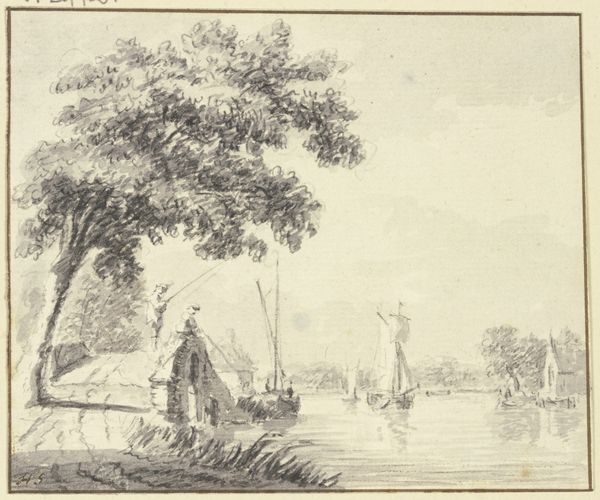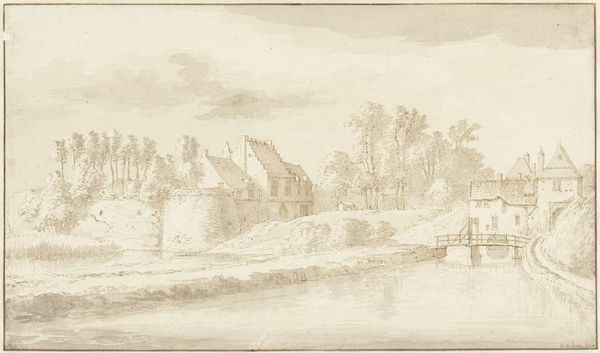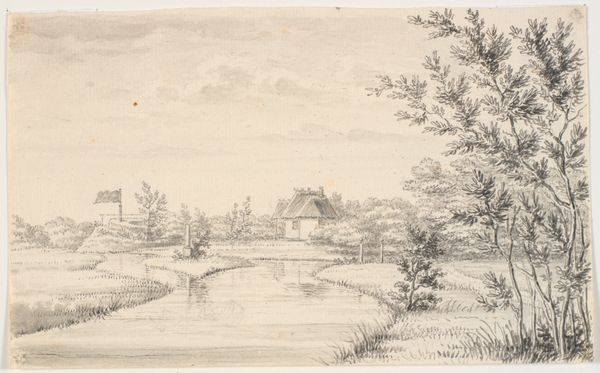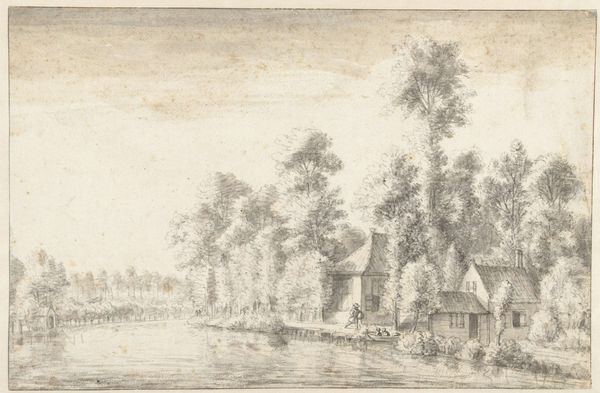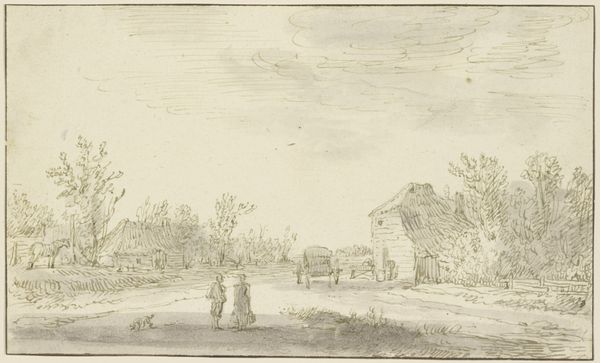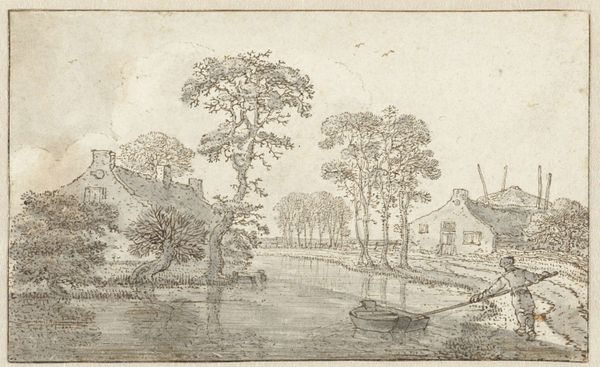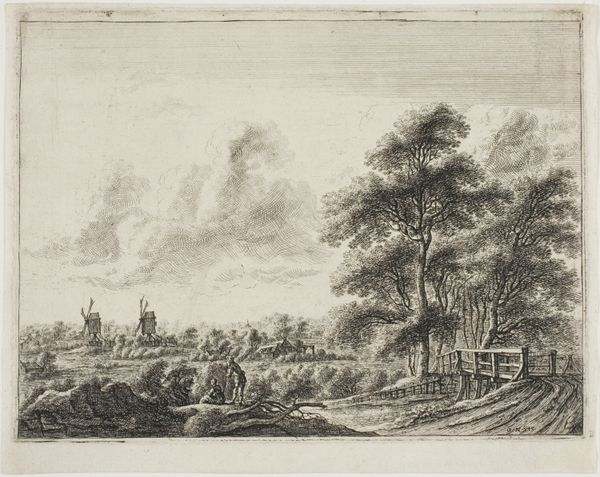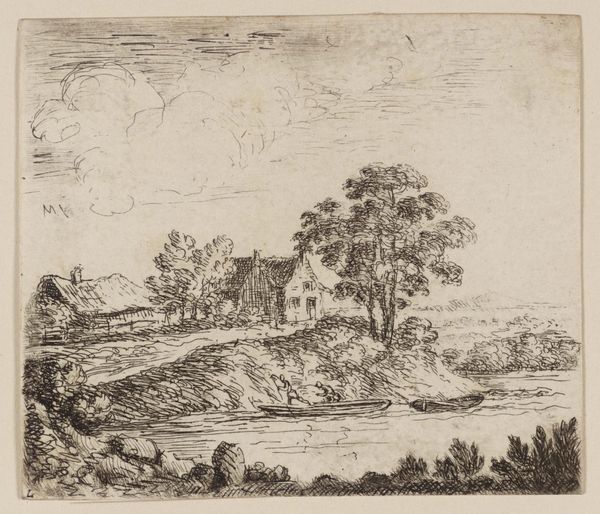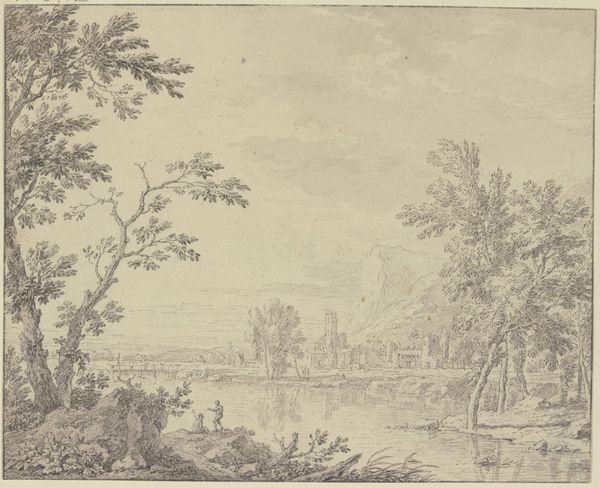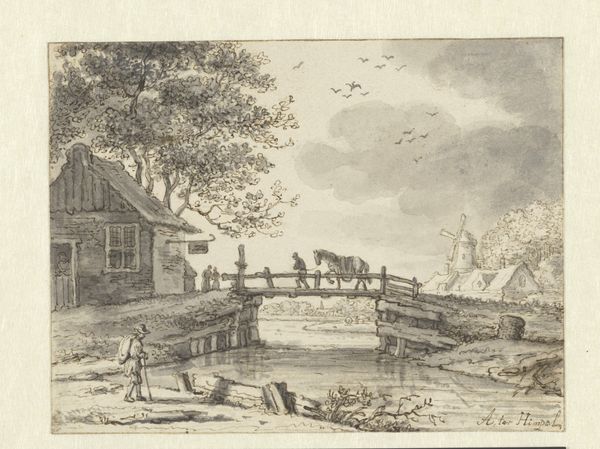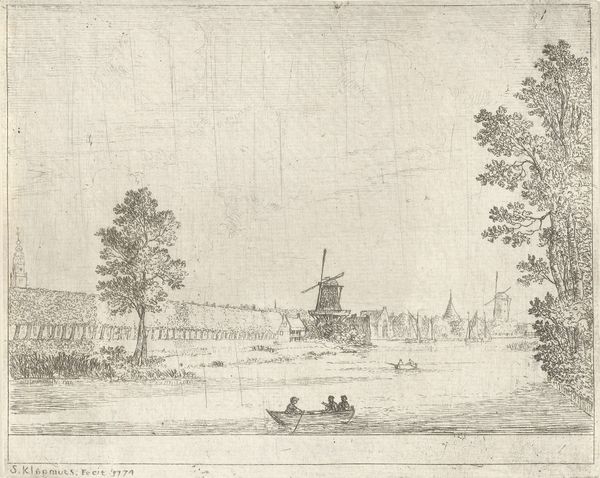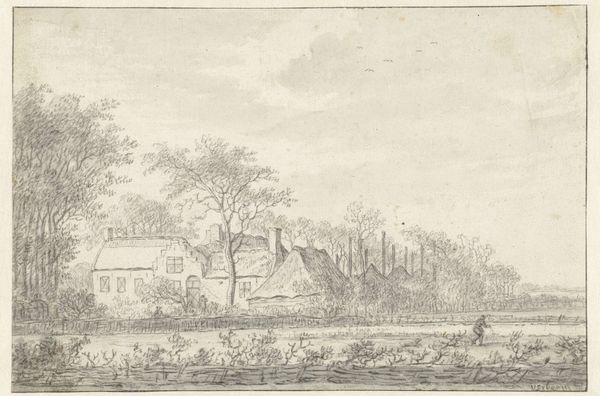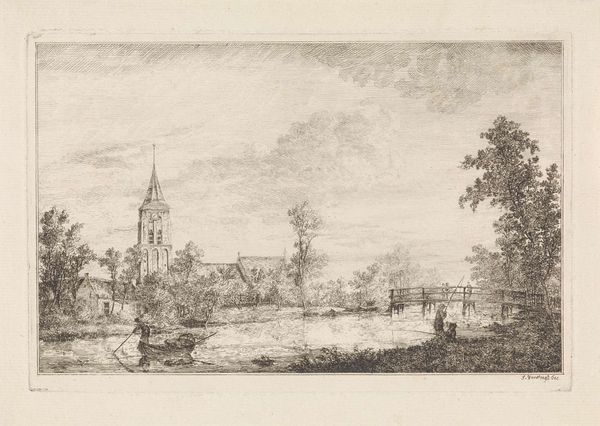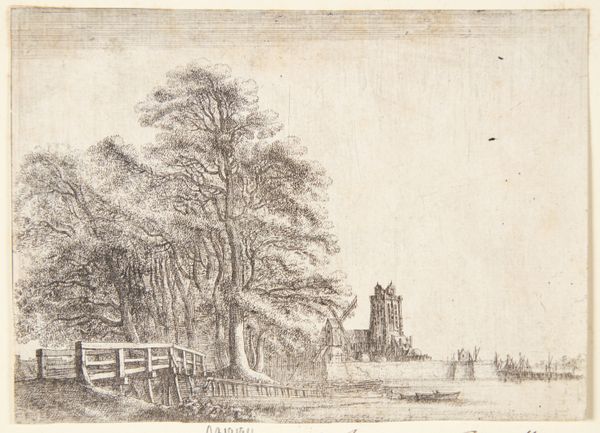
Windmühle auf einer Mauer links, zu der eine Zugbrücke über einen Bach führt before 1627
0:00
0:00
drawing, etching, ink, indian-ink, woodcut, architecture
#
drawing
#
baroque
#
etching
#
landscape
#
etching
#
ink
#
indian-ink
#
pen-ink sketch
#
woodcut
#
14_17th-century
#
architecture
Copyright: Public Domain
Curator: This drawing by Jan van Goyen, dating to before 1627, is titled "Windmühle auf einer Mauer links, zu der eine Zugbrücke über einen Bach führt" which translates to "Windmill on a Wall to the Left, to which a Drawbridge Leads over a Stream." It’s a beautiful example of his early landscape work, showcasing his skill with ink and etching. Editor: Immediately, the sense of quietude strikes me. It’s such a delicate rendering, almost monochromatic, highlighting the intricate play of light and shadow on the textures of the architecture and the landscape. Curator: Yes, van Goyen masterfully uses the etching technique here. Notice how the windmill itself, prominently positioned on the left, functions as a symbol of Dutch ingenuity and industry. Windmills were vital for land reclamation and milling grain. Editor: Exactly! You can practically feel the economic power embedded in that structure. The drawing gives such an immediate access to 17th-century Dutch life and economy through labor and materiality. I can almost feel the texture of the paper and imagine the hand that meticulously laid down each stroke. Curator: And the drawbridge acts as a visual and symbolic link, connecting the industrial center with the surrounding landscape and daily life. Water in art often carries heavy meaning, sometimes about flow of information and people, others about cleansing and renewal. Editor: The choice of using pen, etching, and ink—relatively inexpensive materials at the time—suggests this may have been intended for a broader audience. How do you think its materiality contributes to how accessible its message might be to the broader population in that era? Curator: Absolutely. And beyond its practical purposes, the windmill in Dutch art also came to symbolize national identity and prosperity. It’s become an easily recognizable and cherished symbol through painting, folk tales, and the stories they have woven in people's cultural imagination. Editor: Thinking about labor… It’s incredible how much information and perspective Jan van Goyen manages to share. The materiality of it invites a close examination of the production process, from initial concept to consumption. Curator: A single drawing encapsulating the social and economic landscape of the time. I will see this drawing and the role of its main emblem with new eyes from now on. Editor: I agree, and its simplicity encourages us to consider the unseen labor and the many complex social forces at play in seemingly simple scenes.
Comments
No comments
Be the first to comment and join the conversation on the ultimate creative platform.
